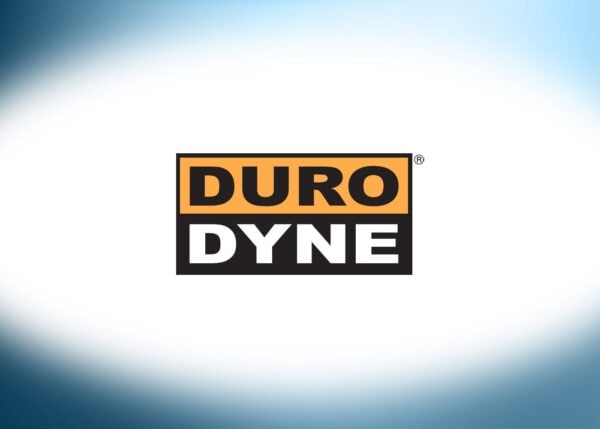01. History of Asbestos Use
Duro Dyne Corporation History of Asbestos Use
Founded in New York in 1952, Duro Dyne began as a manufacturer of sheet metal accessories for heating, cooling and ventilation systems. In their early days, they invented products such as flexible duct connectors, vane rail and blade kits, which are all essential for air turning and effective air systems. As they continued to grow, they added plants in southern California in 1961 and Ohio in 1971.
From the time the company was founded until 1978, however, Duro Dyne utilized asbestos fibers in their accessories, as it was durable in the high-heat conditions of ventilation systems. The toxin was at peak use in the 1960s and 1970s, meaning airflow systems installed during this time were likely to contain asbestos materials from Duro Dyne.
Today, Duro Dyne operates internationally, with locations in North and South America, Asia, Australia, Europe and Africa. Duro Dyne is privately owned, with divisions including Duro Dyne Supply Division, DuroZone Division, Machinery Division, Duro Dyne Tool Division, Dyn-O-Mate Division and Dyna-Tite Divisions.
Although the company stopped producing asbestos products by the 1980s, their asbestos-containing materials exposed thousands of individuals to the hazardous mineral. By 1988, the company was named a defendant in its first asbestos lawsuit and hundreds of personal injury lawsuits continue to be filed today.
Resources for Mesothelioma Patients
02. Asbestos Products
Duro Dyne Corporation Asbestos Products
Duro Dyne’s heating and cooling system products were often made with asbestos, as it served as a low-cost option for its durability, insulating and heat-resistant properties. In these systems, fans or blowers are typically connected to air ducts that carry hot or cool air through walls in order to force the air throughout the space. Blowers are often noisy, so a flexible duct connector is inserted between the machinery and the metal ducts to limit sound emission. Today, flexible duct connectors are usually made from fabric coated in fiberglass or vinyl, but Duro Dyne Corporation formerly manufactured them using asbestos until 1978. Some of these products include:
- Duro-Metal-Fab Flexible Duct Connectors
- Econ-O-Fab Flexible Duct Connectors
- Junior Flexible Duct Connectors
- Duro Dyne Duct Sealer
03. Occupational Exposure
Duro Dyne Corporation and Occupational Exposure
Duro Dyne’s sheet metal materials and heating and cooling equipment exposed thousands to harmful asbestos fibers. Occupations such as construction workers and trades responsible for heating and cooling system maintenance work were often exposed to asbestos on the job. When cutting asbestos sheet metal in a repair or installation job, workers can inhale asbestos fibers from debris. Since these systems force air into spaces, asbestos fibers can easily become airborne and inhaled by anyone in the area.
Individuals who lived or worked in asbestos-containing homes or buildings can be exposed. With heating and cooling systems, those individuals may have been exposed to the toxin through air ducts.
04. Asbestos Litigation
Asbestos Litigation Against Duro Dyne Corporation
Duro Dyne was first named a defendant in an asbestos lawsuit in 1988. Following that case, more workers and consumers began filing personal injury lawsuits against Duro Dyne. By the time the company filed for bankruptcy in 2018, they had faced nearly 9,000 asbestos cases. If you believe you or a loved one was exposed, learn how a mesothelioma lawyer can help.
A California jury awarded Genaro Garcia $325,369 for past and future medical expenses for peritoneal mesothelioma, $530,250 for lost earnings and $1.05 million for non-economic damages, $300,000 of which was awarded to his wife.
In one 2007 case, Genaro Garcia was awarded more than $1.9 million after developing peritoneal mesothelioma at work. Garcia worked as a sheet metal worker for almost 50 years, and claimed he was exposed to chrysotile asbestos from Duro Dyne Corporation’s HVAC duct connectors and duct sealer. Throughout his career, neither his employer nor the materials themselves included instruction on properly handling asbestos or wearing protective clothing. Although Duro Dyne claimed that their asbestos materials did not cause Garcia’s mesothelioma, the jury decided Duro Dyne was responsible for his diagnosis.
Another such case was settled in 2013, resulting in a $2.3 million settlement for Charlotte Vinciguerra, who filed a lawsuit on behalf of her husband, Frank Vinciguerra. Vinciguerra passed away in 2010 from malignant mesothelioma, which was caused by his mechanic and sheet metal work from the 1950s – 1980s.
Duro Dyne Corporation was one company mentioned in the lawsuit as being responsible for Vinciguerra’s mesothelioma. Other asbestos companies in the lawsuit included:
- E I DuPont De Nemours and Company
- DAP Incorporated
- The Goodyear Tire and Rubber Company
- Goodyear Canada Incorporated
- Crane Company
05. Asbestos Trust Fund
Duro Dyne Corporation Asbestos Trust Fund
As of 2018, Duro Dyne Corporation faces about 1,000 asbestos-related claims.
Duro Dyne filed for Chapter 11 bankruptcy in September 2018 after facing thousands of asbestos lawsuits. The company faced further complications after the Department of Justice rejected their asbestos trust fund representative, Lawrence Fitzpatrick, due to his previous connections to Duro Dyne. Fitzpatrick also worked with other asbestos companies with trust funds, making the Department of Justice wary of his ability to act independently.
Due to the rejection of their representative, Duro Dyne cannot move forward with their plan, which includes establishing an asbestos trust fund and putting it into practice, until their representative is secured and approved. Their plan is to establish a trust fund with at least $10.5 million in initial cash funding and $13.5 million in third-party funding.




